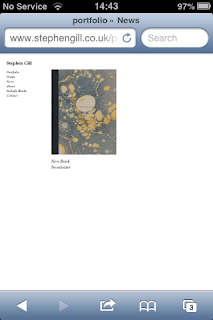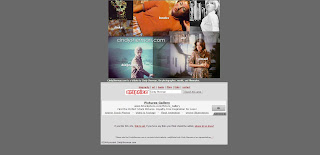There are lots of places that sell portfolio books - and it's just a matter of looking around, in shops and online, to find out what you really really like. I'm yet to find my perfect portfolio but hopefully this research will give me a better idea of what I'm looking for.
High Street
I think shopping for a portfolio book in person is a much better experience, as you can physically hold the book before you agree to pay for it. You get to see exactly what size it is, what the paper is like, what colour is it etc, which you can't do when buying online. However, if you buy from a high street store online, sometimes they allow you to get it sent to the store, rather than to your home address, which could also be an advantage. WHSmith and Paperchase are the main two stationary/arty shops that I go in in Ipswich, so I thought I would see what they have to offer online (I am assuming that what is online is similar to what they have in the shops, or they can order in).
WHSmith
WHSmith have no portfolio books - at least none online. The only kind of portfolio storage they sell is these big carry cases, which don't look particularly nice and for me, aren't professional enough.
Paperchase
Paperchase offers slightly more portfolio related things. There are folders, books and files. However, the most impressive two I found on the website are the two most expensive (aka ridiculously overpriced).
This folder looks clean and sturdy. It features inner pockets, a business card pocket, and it is also able to hold plastic wallets. I think if I managed to get some good quality plastic wallets, the combination of those and this folder would be a nice finished product. This portfolio case also comes with a shoulder strap and has a carry handle, so it's easy to transport, which is an important factor. However, as you can see, its £40, which to me seems far too expensive. I like it, but I don't like it that much. It would be £40, plus the cost of the plastic wallets, plus the cost of the prints - and that figure would be far too high.
The second portfolio that stood out is a display book (what is what I was looking for in the first place). The main feature of this book that I like is the leather cover, and the fact it has sheet protectors and paper inserts inside. Everything matches and looks sleek, and I wouldn't have to go and buy plastic wallets from another place. It's a shame this book is so expensive because I am really drawn to it - but it's just simply not in my budget.
Online
Silverprint also sells display books, as well as print and portfolio boxes.
Once again, I am drawn to the leather books. However, I think given the choice between buying from Silverprint and Paperchase, I would probably chose Silverprint - as they are more specific to the arts and understand what our needs are. These beautiful books however, range from £92.58 to £124.24, which is way, way too much money.
The Portfolio Store has the most options out of all of the above by a long way, however I have never heard of them before - it just came up when I Googled where I could buy portfolio books from. I think if I was going to pay a large amount for a book I would want to make sure the company was a decent one and/or get some recommendations. All of these display books seems reasonably professional looking.
This book is the cheapest, that I liked the look of. It's faux leather, available up to A2 size, and contains 20 fixed sleeves. I assume this means you can't add to it - but 20 (to me) seems enough. I think it looks quite elegant, and I could add personal touches as there is an inside pocket.
This is my favourite find - a leather portfolio that is available in 3 colours (which probably is only exciting me because every other portfolio is in black only). This display book is made from real leather, has a lovely little closer tab, it enables you to add and take away pages, can hold up to 20 sleeves, and is available up to A3 size. Even though this book doesn't go as big as the previous one, it still comes in the sort of size I'm looking for. The prices don't seem too bad either, if you take into account that it's real leather, and the folder from Paperchase was only a £1 cheaper. I am definitely bookmarking this page for future reference, and if you're wondering - I'd get the brown one.
































